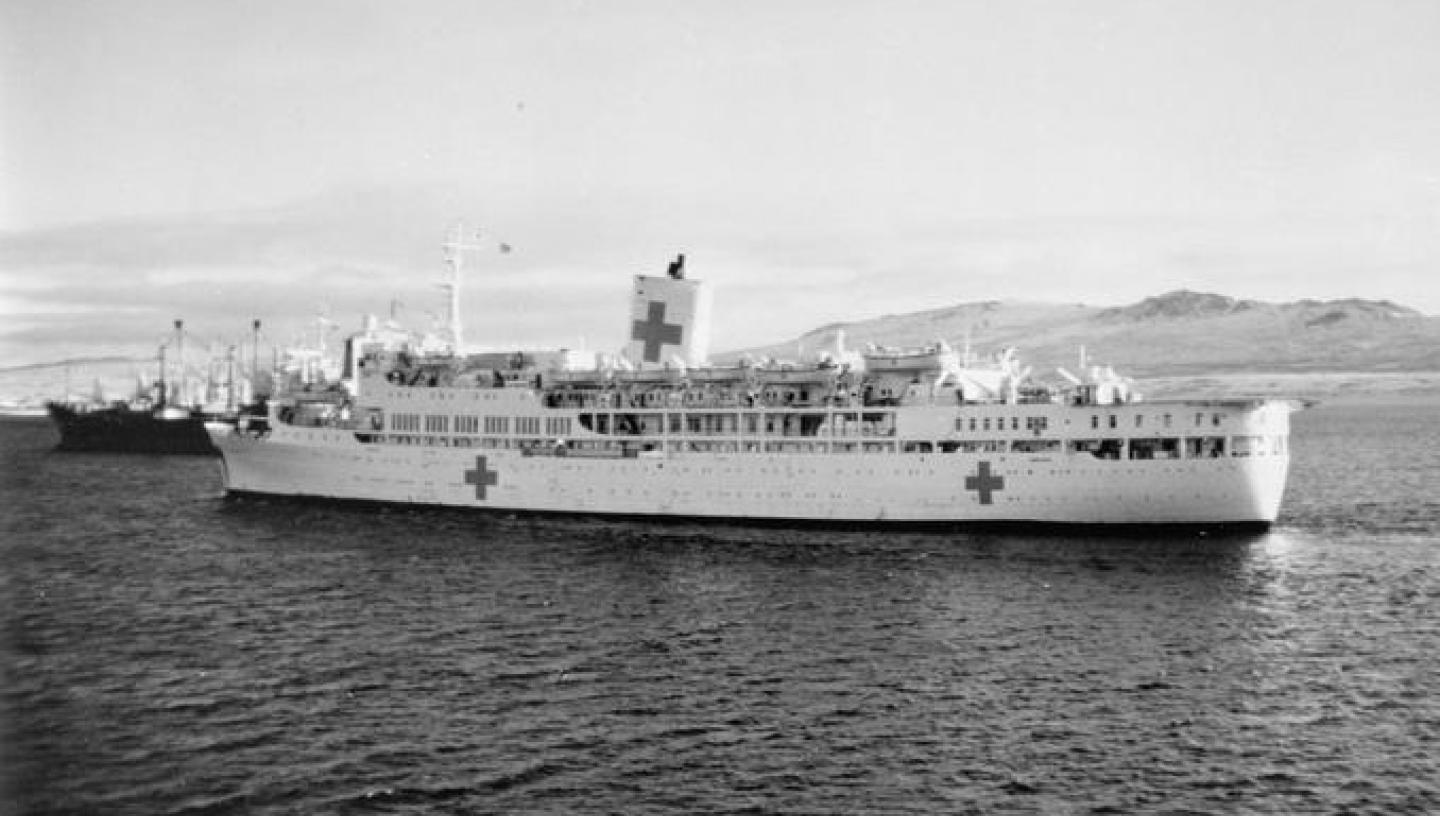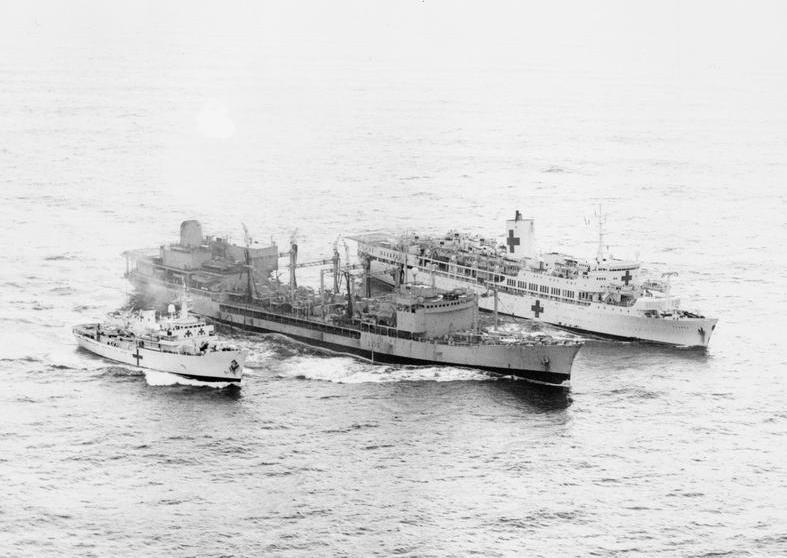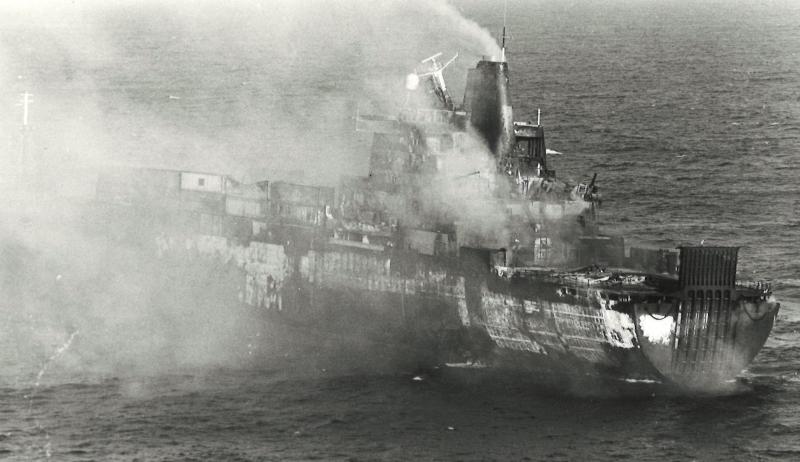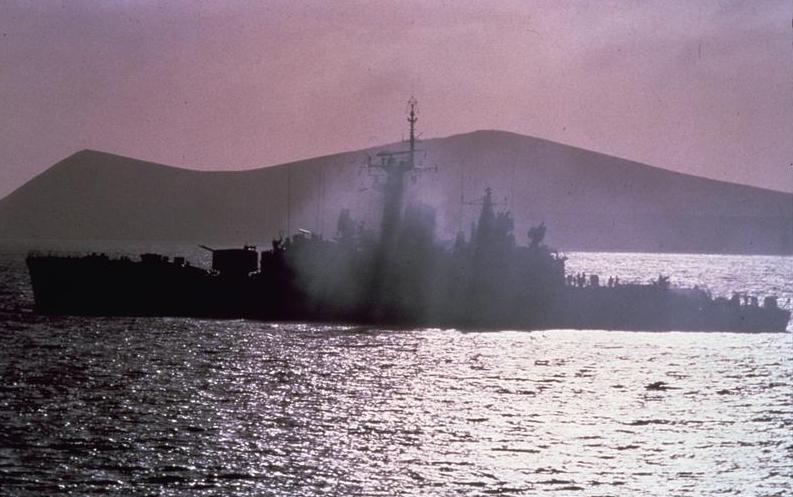
On 2 April 1982, Argentinian forces invaded the Falkland Islands. Efforts to resolve the conflict diplomatically soon failed, and on 5 April the British government launched an amphibious task force in response.
Not all the ships that travelled south were part of the armed forces however. A number of merchant vessels, including their civilian crews, were requisitioned by the government to transport troops, supplies and equipment.
One of the ships chosen for service was the 45,000-ton P&O cruise ship Canberra, dubbed ‘The Great White Whale’. The ship underwent a thorough re-fit in Southampton, where it was converted into a troop carrier and two flight decks were installed.
Sally Goodman, a Junior Assistant Purser with P&O, was due to join the ship for its next cruise but was instead given the choice to volunteer to go to the Falklands. She said yes.

Canberra sailed from Southampton on 9 April 1982 carrying 40 and 42 Commando Royal Marines, the 3rd Parachute Regiment, smaller units from the Royal Navy and the Royal Marines Band.
Sally recalls the different services.
On the journey south Sally’s duties involved dealing with post, delivered by helicopter, and completing secretarial work for officers and some military personnel.
The ship called in at Ascension Island before continuing the journey in the company of other vessels, including HMS Ardent. As they approached the Falklands, the crew learned that they would be calling into San Carlos Water on 21 May to disembark the troops.
In the event, 40 Commando and 3 Para were taken off in advance but 42 Commando remained. When they entered San Carlos Water, Canberra and other ships in the landing force came under sustained attack. HMS Ardent was ultimately sunk, with the loss of 22 crew.
Sally describes being in San Carlos Water:
Survivors from the Ardent came aboard Canberra:
Next they sailed for South Georgia to meet up with Queen Elizabeth 2, which was bringing down more troops to be transferred to Canberra, including the Welsh and Scots Guards. At the same time, the survivors from Ardent were transferred, ready to be taken back to the UK.
Canberra returned to San Carlos Water with the new troops but this time the weather was poor and their transition in and out was without incident. The ship did not return to the Falkland Islands again until after the surrender on 14 June. Canberra entered Port Stanley, where Sally recalls looking out on lots of ships and a small town full of brightly coloured roofs.
It was here that Canberra took almost 4000 prisoners of war on board. They were young, mainly conscripts and poorly equipped for war. The ship was to take these men to Puerto Madryn to be repatriated.
Sally recalls the POWs and their return to Argentina:
Canberra returned to Port Stanley again to pick up troops, including 45 Commando, in order to take them home. Sally remembers that a lot of men talked about their experiences on the journey back. Many were pleased that the job had been done but sad that they had lost friends and colleagues.
They called in at Ascension before returning to the UK. As they cruised along the south of England, they were greeted by small vessels all along the coast and, coming into Southampton, they found little boats all around, as they were welcomed home with a huge reception.
Story by Lucy Dale, Curator of Maritime History at Royal Museums Greenwich
Main image courtesy of Imperial War Museums, © IWM FKD 1286



